Hello, I am Satomi Fukamachi, a Japanese-style painter.
Winter in Japan is the season for taking exams.
Some of you may be students taking exams who are doing their best but for some reason are not doing well.
Others may have been told that they have no room to grow.
When you are stuck in such a situation, going to a certain place may open the way for you!
So, continuing from the previous article,
“Gods and Shrines of Art and Fine Arts,“
here is a list of shrines in Japan that are beneficial for art and fine arts, as well as some good luck charms!
If you find one of these shrines nearby, you may be able to get the knack of getting better at drawing.
Contents
- 1 God of blessings for arts and fine arts
- 2 Shrines and Good Luck Charms for the Gods of Arts and Fine Arts
- 2.1 Kansai – Shrines dedicated to the god of arts and fine arts
- 2.1.1 Kurumazaki Shrine Shrine of Arts and Entertainment
- 2.1.2 Nonomiya Shrine
- 2.1.3 Kitano Tenmangu Shrine
- 2.1.4 Kisshoin Tenmangu Shrine
- 2.1.5 Imamiya Shrine Orihime Shrine
- 2.1.6 Yasaka Koshindo
- 2.1.7 Tsubakigishi Shrine
- 2.1.8 Tanzan Shrine
- 2.1.9 Ise Jingu Sarume Shrine
- 2.1.10 Seimei Shrine
- 2.1.11 Tenkawa Daibenzaiten Shrine
- 2.1.12 Kyoto Gion Yasaka Shrine
- 2.1.13 Osaka Tenmangu Shrine
- 2.1.14 Yotsumiya Shrine, Hyogo
- 2.2 Kanto – Shrines dedicated to the God of Arts and Fine Arts
- 2.3 Kyushu – Shrines dedicated to the God of Arts and Fine Arts
- 2.4 Chubu – Shrines dedicated to the God of Arts and Fine Arts
- 2.5 Hokkaido – Shrines dedicated to the Gods of Art and Artistry
- 2.1 Kansai – Shrines dedicated to the god of arts and fine arts
- 3 In summary – this is a shrine that enshrines art and art & good luck charms!
God of blessings for arts and fine arts
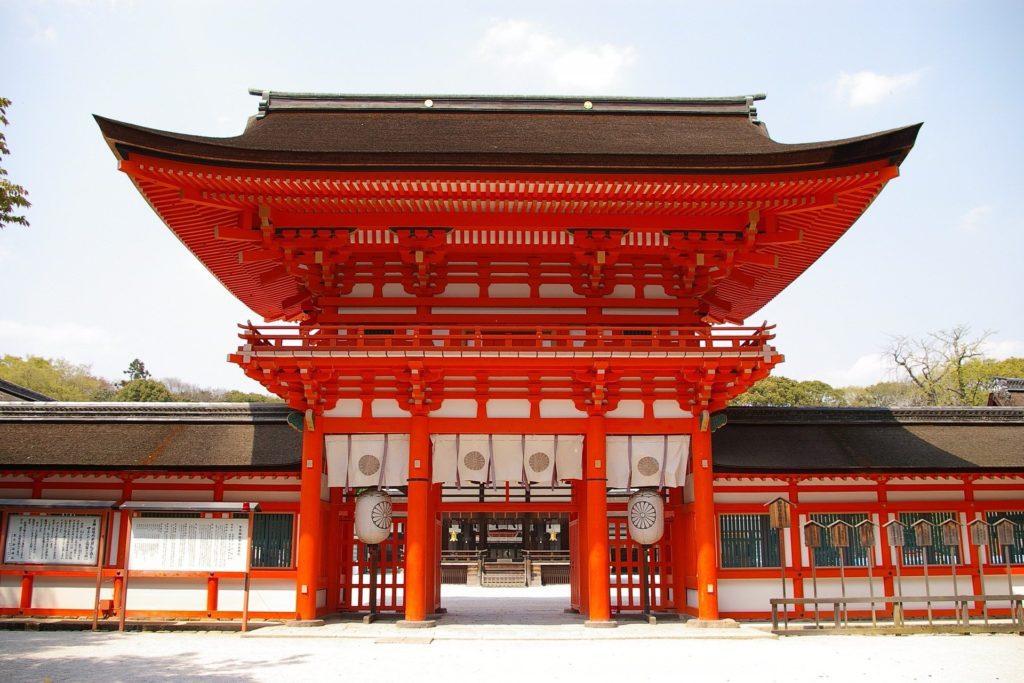
Amenouzume, Benzaiten, and Ichikishimahime are gods of art.
Real-life figures who excelled at art also became gods of art.
In this article, we will take a closer look at specific shrines and amulets, as well as some unusual shrines that worship deities other than those mentioned above.
There are also shrines for crafts such as pottery and textiles.
So,if you visit the shrines I mentioned, you may be able to get the hang of painting well.!
Shrines and Good Luck Charms for the Gods of Arts and Fine Arts
Kansai – Shrines dedicated to the god of arts and fine arts
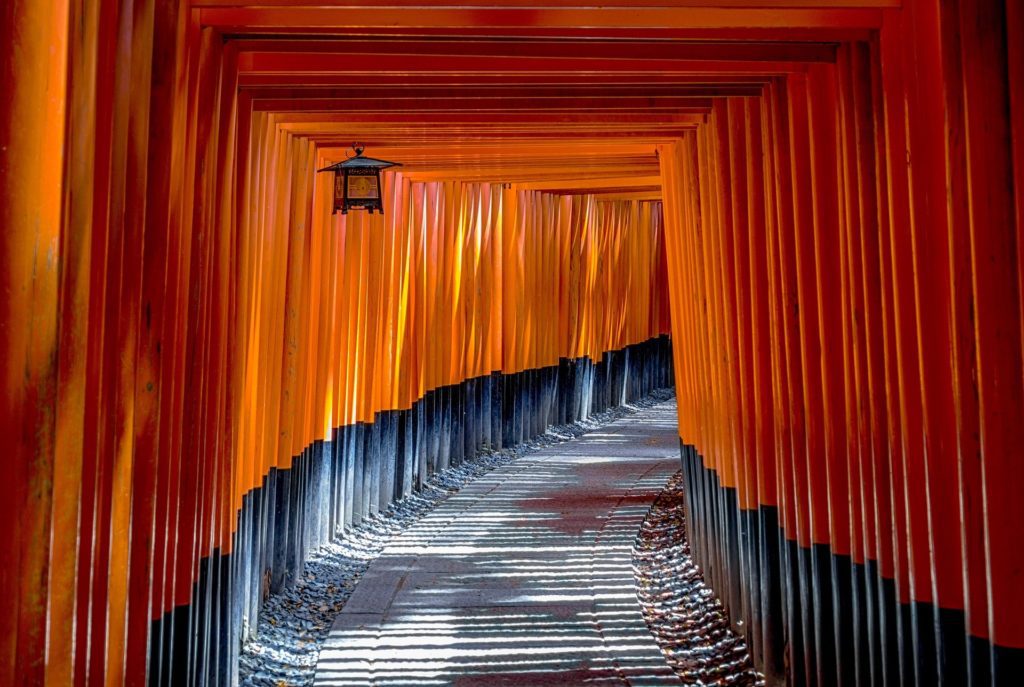
Kurumazaki Shrine Shrine of Arts and Entertainment
Japanese Painting
Kurumazaki Shrine is dedicated to Kiyohara Yorinari, a Confucian scholar of the Heian period (794-1192).
The performing arts shrine is located within the precincts of this shrine.
The deity is Amenouzume, mentioned in the previous chapter.
The shrine is known to be visited by many celebrities, including famous actors and musicians.
In fact, if you look closely at the red tamagaki, a red wall dedicated by worshippers in the shrine grounds, you will see the names of celebrities lined up in rows.
If you look more closely at the tamagaki, you will find the names of not only entertainers, but also writers and painters.
In addition to the performing arts shrine, there is sometimes a shrine dedicated to Benzaiten (a goddess of the gods) and a shrine of eight million people, which is beneficial for expanding one’s human network, within Kurumazaki Shrine.
In other words, this shrine is also recommended for those who want to make themselves and their works (acting and music, too) more attractive to many people.
In a broader sense, it would not be an exaggeration to say that the shrine attracts the faith of those who want to market themselves.
Also, from an artistic point of view, it is important to note that Tessai Tomioka, a Japanese painter, was the chief priest of the shrine.
A charm to ward off evil spirits with Tessai’s paintings of Tsuina woven into it is distributed.
There is also a brush mound where Tessai’s brushes were kept, making it one of the must-visit shrines.
【AMULET】
京都の人気観光地・嵐山からほど近い場所にあり、芸能神社として有名な車折神社。芸能人、ミュージシャン、華道や書道、茶道など幅広く芸能関係者が訪れ、奉納された方の名前がズラリと並ぶ玉垣は圧巻
— スガ シカオ (@shikaosuga) June 21, 2022
ぼくは奉納しませんでしたが、願い事の叶うパワーストーン「祈念神石」は、しっかりゲットしました pic.twitter.com/T4rhAwAl1h
Kurumazaki Shrine is located not far from Arashiyama, a popular sightseeing spot in Kyoto, and is famous as a performing arts shrine.
It is visited by a wide range of people involved in the performing arts, including entertainers, musicians, flower arrangers, calligraphers, and tea masters.
The names of those who have dedicated their works to the shrine are lined up in a row on the tamagaki wall, which is a sight to behold.I did not dedicate myself to the shrine, but I did get the “Prayer God Stone,” a power stone that makes wishes come true.
@shikaosuga
The amulet called “Prayer God Stone” is very popular.
It is so popular that celebrities carry it hoping to pass an audition.
It can be mailed to you, so you can receive it even during periods when it is difficult to travel.
Reference HP: Kurumazaki Shrine
Nonomiya Shrine
Lacquer art◆貢物 「野々宮神社 開運・招福 お守り」
— SHINGO師匠 (@MIYABIOKINA) June 25, 2022
FROM 3193番弟子 おでんが好きなでんでん pic.twitter.com/KGmNJEr4YU
I received a dedication from a disciple. It is an amulet of good luck and good fortune from Nonomiya Shrine.
@MIYABIOKINA
This shrine is associated with Ise Jingu Shrine.
The deity is Amaterasu.
The shrine’s precincts are dedicated to the goddess Shiramine Benzaiten.
It was also one of the settings of the Tale of Genji.
You can see how it has been worshipped in Kyoto.
You can enjoy the beautiful bamboo grove and take your time to visit the shrine.
【お守り】
談山神社の藝守
— 鳥居 (@shinmeitorii1) October 9, 2022
摩多羅神にちなむお守りということで拝受。諸芸上達のお守り。 pic.twitter.com/Dz3RWKRRfz
This is a traditional amulet of Danzan Shrine.
This is a good luck charm associated with Matarajin. It is a good luck charm for improving various arts.
@shinmeitorii1
Amulet of Art
This amulet has a strong impact with the old Chinese character “gei” (藝) on it.
It is a talisman for the performing arts, but as the previous article says, It can be said that it is a talisman that is beneficial to the arts in a wide range of fields.
By the way, the Chinese character “gei” (藝) may remind some people of something.
Yes, it is the “Gei”(藝) of Tokyo University of the Arts.
If you take this in your hand and do sketching every day, you may be accepted to the Tokyo University of the Arts.
The kanji “藝” and “芸” are currently used to mean the same thing.
But did you know that they actually have different meanings?
藝” means “to plant” and “芸” means “to reap.
Thinking of this may inspire you to create a work of art that will instill something in people’s hearts.
It will be a talisman that will inspire you to create with a goal in mind.
Good Luck Charm
This is a beautiful netsuke type amulet with a princess from the Tale of Genji painted in Hon Makie on Kyoto lacquer ware.
This amulet is made with lacquer craftsmanship.
Therefore, those who wish to learn lacquer craft should carry this amulet together with the art amulet.
It is sure to double your blessings.
Reference HP: Nonomiya Shrine
Kitano Tenmangu Shrine
Classes and Lessons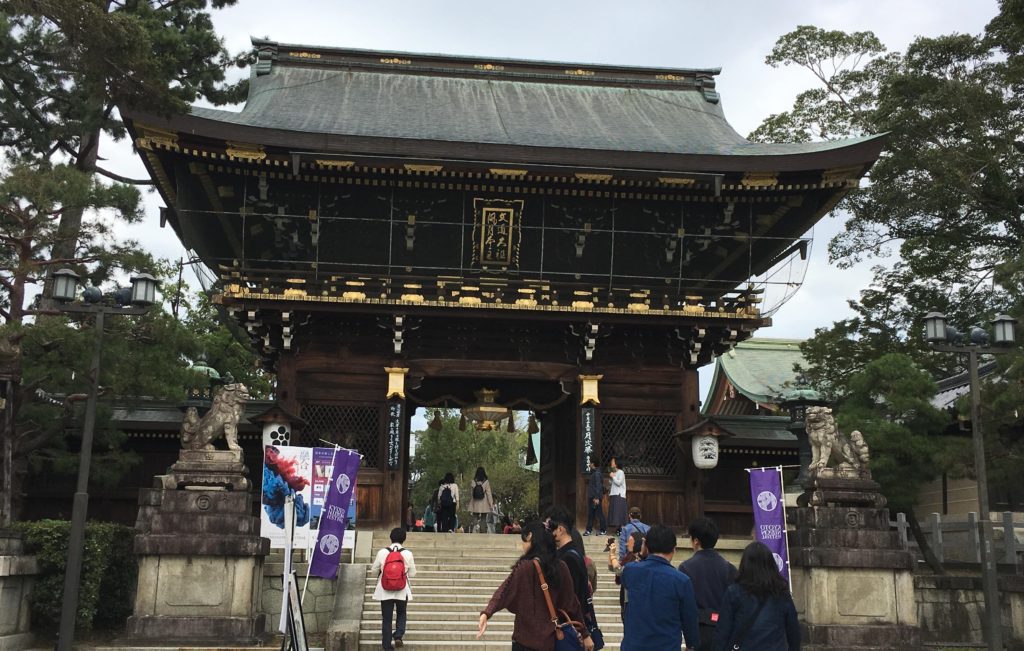
This is the head shrine of Tenmangu Shrine, which is dedicated to Sugawara no Michizane.
This shrine has a long history, having been opened in the mid-Heian period.
However, even before Michizane, it has been considered a place filled with heavenly energy.
It seems to have been regarded as a special holy place.
【AMULET】
The Hoshi-mamori is a star amulet that is named after the energy of the heavens.
先日フォロワーさんが呟いているのを見て、気になったのでググってみたら違う神社なんだけど⛩こんな素敵なのが出てきた☆
— ☆kaoringo☆ (@kaoringo107) October 11, 2016
京都・北野天満宮の『星守り』
んー、惜しいっ(ㆀ˘・з・˘)
でも素敵だからぜひチェックしてみてください😊✨✨ pic.twitter.com/OrVf9o1TKr
I saw a follower of mine muttering about it the other day, and I was curious, so I googled it and found a different shrine ⛩ and found this wonderful one☆.
@kaoringo107
It’s a “Hoshi Mamori” at Kitano Tenmangu Shrine in Kyoto.
Hmmm, I couldn’t make it there at a regrettable time.
But it’s nice, so please check it out!
Hoshi Mamori (star amulet) Ao Fuku(blue)
It protects the arts as well as sports and improvement of performance.
It is a charm to help those who wish to train daily and build up their skills.
The cool blue color may improve your intelligence and make you aware of tricks to become better at what you do.
Hoshi Mamori (star amulet) Haku raku (white)
北野天満宮、お守りは白と青の星守りにしました
— きくも⚡️充電中 (@kikum0000n) February 19, 2016
白は「趣味達成」
青は「技芸上達」
刀剣コンプ?
とにかく今は絵がうまくなりますように! pic.twitter.com/Yz7FGcgNi3
I bought a white and blue star charm at Kitano Tenmangu Shrine.
@kikum0000n
The white one is for “achievement of hobbies”.
The blue one is “Improvement in technique”.
Japanese swords complete?
Anyway, now I wish to get better at painting!
Luck and blessings. Wish fulfillment. Career fulfillment.
Fun achievement.
White is associated with hobby achievement.
It is for those who attend painting or pottery classes.
Amulet of skill improvement
北野天満宮で買った技芸上達守りをネロブースに装着した pic.twitter.com/fOvkMTl4HH
— 鳥取の人 (@yusuke_u) November 19, 2017
I attached an amulet for good luck with handicrafts purchased at the Kitano Tenmangu Shrine to my painting booth.
@yusuke_u
《旅MIYAGE@京都》北野天満宮の「技芸上達守」。学問・芸能の神様である天神様にちなみ、スポーツや芸術、習い事などの技能向上にご利益が。表には、梅と松、的を狙い弓を引く人の刺繍が施されています。上達には日々の精進が大切の意味? pic.twitter.com/boLyfQSHUa
— 旅とくらし文化研究所 (@tabi_kurashi) May 10, 2016
《Journey MIYAGE@Kyoto》
@tabi_kurashi
This is an amulet of skill improvement from Kitano Tenmangu Shrine. It is named after Tenjin-sama, the god of learning and the performing arts, and is beneficial for improving skills in sports, the arts, and other subjects. The front is embroidered with a plum tree, a pine tree, and a person drawing a bow aiming at a target. Does it mean that daily devotion is important for improvement?
Tenjin-sama is also the “god of the arts. Please receive his divine virtues and devote yourself to improving your skills.
The blessings are the improvement of skills in sports, arts, and studies.
Reference: Kitano Tenmangu Shrine
Surprisingly, Sugawara Michizane excelled at archery and martial arts.
This charm depicts him shooting his bow with a hundred shots.
Like the Star Amulet, it brings blessings for the improvement of skills in the arts and studies.
You may purchase both the Star Amulet and the Star Amulet.
Kisshoin Tenmangu Shrine
⛩️吉祥院天満宮
— ☘️ẅ小判草ẅ☘️ (@kobansou85) April 27, 2021
(京都市南区)☺️🙏
御祭神 菅原道真#吉祥院天満宮 pic.twitter.com/Q7nxpdD04F
Kisshoin Tenmangu Shrine
(Minami-ku, Kyoto)☺️🙏The god Sugawara no Michizane
@kobansou85
Kissho Tenmangu Shrine is dedicated to Sugawara no Michizane and Kissho Ten.
It is actually the oldest Tenmangu Shrine built by Emperor Suzaku.
In 2020, a “golden petting bull” will be unveiled, and it seems to be an increasingly spiritual place.
【AMULET】
厄除け散歩その一。吉祥院天満宮で能力開発と学業成就祈願。 pic.twitter.com/I7iV9f34WJ
— Hanamure (@aiko3) January 2, 2021
The first of a series of walks to get rid of bad luck.
@aiko3
Pray for ability development and academic success at Kisshoin Tenmangu Shrine.
Amulet of ability development
Hello Kitty amulets seem to be popular, but this is an article introducing art.
So let’s take a look at the ability development amulet.
The design is cute and sophisticated, with five-colored gradient balls lined up on a white background.
Since it is an ability development, it will bring you good fortune to develop various talents, not only in art.
Reference HP: Kisshoin Tenmangu Shrine
Imamiya Shrine Orihime Shrine
Textiles and Dyeing Crafts綾傘鉾は今宮神社主催の祭礼「織姫社七夕祭(オリヒメヲイツキマツル)」でもお囃子を奉納させて頂いております。
— 八代・睦月十四郎@綾傘鉾囃子方 (@mutsuki14law) August 4, 2020
旧暦の七夕🎋🌌に則って西陣の業祖神である織姫大神に感謝を捧げる祭です。
夜、篝火に照らされた中で行われる祭礼・お囃子は大変神秘的です✨#今宮神社 #綾傘鉾 #京都 #一年前日記 pic.twitter.com/4pFnLDaxbe
AYA GASABOKO also offers musical accompaniment at the “Orihime Shrine Tanabata Festival (Orihime wo Itsukimatsuru),” a festival sponsored by Imamiya Shrine.
@mutsuki14law
This festival is held in accordance with the Tanabata Festival of the lunar calendar to give thanks to Orihime-Ookami, the ancestor of the traditional craft of Nishijin brocade.
The festival is held at night under the light of a bonfire, and the musical performance is very mysterious.
The god of this shrine is the ancestral god of textiles.
Her name is Takuhatachizihime-no-Mikoto.
She is said to be the goddess who taught weaving to the Tanabata weaver.
The goddess of textiles had been enshrined since ancient times, but was called to the shrine in the Edo period (1603-1868) by a Nishijin textile merchant and enshrined there.
Because of the beauty of her textiles, she is revered by those who wish to improve their craft.
【AMULET】
七夕といえば、今宮神社に織姫社という末社があります。織姫に機織りを教えたと言われている栲幡千千姫命がお祀りされています。
— 卯月みか (@momo_20180707) July 7, 2022
技芸上達を願って、お守りをいただきました。#京都 pic.twitter.com/1uq4RuvROy
Speaking of Tanabata Festival, there is a shrine called Orihime-sha at Imamiya Shrine.
@momo_20180707
It is dedicated to the deity Takuhatachizihime-no-Mikoto, who is said to have taught Orihime the art of weaving.
I received an amulet to wish for the improvement of my skills.
Amulet for improvement of craftsmanship
Beautifully embroidered amulet in a bag.
It comes in three colors: red, navy blue, and white.
The bag is also embroidered with gold, giving it a very luxurious appearance.
Sanhime(Three Goddesses)-mamori (Beauty and Guidance)
京都の今宮神社には、宗像三女神のお守りがありましたよ。
— 関洋平 Seki Yohei (@yokai0330) August 16, 2020
あなたの推し女神はどなた?
やっぱりタギツヒメかなあ。
(祭神が須佐之男なので、その娘として祀られてるようです)#刀使ノ巫女 pic.twitter.com/q6FvnM5uvm
At Imamiya Shrine in Kyoto, there was an amulet of the three Munakata goddesses.
@yokai0330
Who is your favorite goddess?
I guess Tagitsuhime.
(She seems to be enshrined as the daughter of Susano, whose deity is Susano.)
This is an amulet of the three Munakata goddesses enshrined in Imamiya Shrine.
There are three types of amulets prayed to Ichikishimahime, who is identified with Benzaiten, and Tagitsuhime and Tagirihime.
Catfish, the messengers of the three goddesses (animals that are messengers of the gods), are carefully crafted with mizuhiki work, making the amulets very cute.
Although it is not for the purpose of improving one’s skills, it is introduced here because of its connection with Benzaiten.
Reference HP: Imamiya Shrine
Yasaka Koshindo
Crafts and Hobbies八坂庚申堂かわいい&キレイー!!! pic.twitter.com/kqQoMAsOSz
— nobo (@nobo_kyoto) January 24, 2023
Yasaka Koshindo Cute & Beautiful!
@nobo_kyoto
This temple was the first temple in Japan to initiate the Taoist belief of Kushin.
The belief in Koshin is based on the following story.
On the day of Kanoe-Saru, an imaginary worm inside a person’s body slips out and reports evil deeds to the Emperor of Heaven (Enma), shortening one’s life span.
Therefore, people stayed up all night to prevent the worm from slipping out.
The “shin” was associated with “monkey” and turned into a divine messenger, and monkey charms are distributed in modern times.
The Gohonzon is a blue-faced vajra that eats imaginary insects that are believed to be inside its body.
【AMULET】
技芸上達指猿
[36:指猿(京都の郷土玩具)]
— 照 紗 | Teresa Chiba (@p_genmu) May 6, 2020
八坂庚申堂で授与される猿のお守り。指の形をした手びねり人形は、「お猿さんの様に手先が器用になります様に」と技芸上達の願いが込められています。私もこの子たちを側に置いて精進したいですよー🐵✨#お絵描きお百度参り pic.twitter.com/c6s5oy4II7
[36: Finger monkey (Kyoto’s local toy)
@p_genmu
This is a monkey charm given at Yasaka Koshindo. The finger-shaped hand puppets are made with the wish that they will improve their skills and dexterity like the monkeys. I want to keep them by my side as I devote myself to my craft.
This is a ceramic good-luck charm of a monkey.
The image of a dexterous monkey is used to pray for improvement in handicrafts and crafts.
Each one has a different expression.
Find your favorite monkey.
Because of the above-mentioned reason for the belief in Koshin, it is said that the charm also brings blessings to ward off bad luck.
Tsubakigishi Shrine
椿岸神社。😊 pic.twitter.com/Aw7oR5MGTb
— 教善院龍雲 (@MicRyuun723) January 13, 2021
Tsubakigishi Shrine.
@MicRyuun723
This shrine is located in Suzuka City, Mie Prefecture.
The main deity is Sartahiko.
Amenouzume, who became his wife, is also enshrined at the shrine.
Amenouzume is the ancestral goddess of the arts.
Therefore, Amenouzume is said to have blessings for a wide range of artistic activities, including the arts and fine arts.
They are also known as the god of married couples. It is also a shrine of conjugal harmony and matchmaking.
The shrine is also known as Tsubakigishi, and there are a variety of elegant amulets with camellia motifs.
There are amulets that are easy to carry for both women and men.
There is also a red seal book with an illustration of a character named Saltahiko from Osamu Tezuka’s “The HINOTORI(Fire bird)”.
【AMULET】
Gei-Mamori (protection for arts and crafts)
As at Nonomiya Shrine, the word “Gei”「藝」 is embroidered in large letters on this charm.
There are three colors: white, peach, and yellow.
Reference HP:Tsubakigishi Shrine
Tanzan Shrine
【紅葉】
— 談山神社,Tanzan-Jinja Shrine【公式】 (@TanzanJinja) November 22, 2023
おはようございます🌄
本日は10時より新嘗祭(にいなめさい)が斎行されます。
境内は雪を乗り越えた紅葉が良い色に染まっております🍁#談山神社 #紅葉 #秋 #奈良 #観光 pic.twitter.com/C7qNsSJ0ug
Autumn Foliage
Good morning 🌄.Today, the Niinamesai Ceremony will be held from 10:00 a.m.
The precincts of the shrine are tinted with nice colors of autumn leaves that have survived the snow.
@TanzanJinja
The shrine was built in Sakurai City, Nara Prefecture, and enshrines Kamako Nakatomi (later Lord Kamatari Fujiwara) as its deities.
Speaking of Kamatari Nakatomi, he is very famous in Japanese history for his “Taika-no-kaishin” with Emperor Nakano-oeno-oji.
At that time, the place where he and Emperor Nakaotio had a discussion was called “Katarainoyama” or “Tanjogamori”.
(Katarai and Tan are Japanese words meaning to discuss.)
This is said to be the origin of the Tanzan Shrine.
【AMULET】
Gei-Mamoru (protection for arts)
「オカリナ精進しなさい」と久しぶりに会った母から手渡された談山神社の御守り。実に有難いのです。 pic.twitter.com/CvR7BscOkE
— ライリッシュ・オカリナ連盟 堺北会 (@ocarina_sacay) December 2, 2019
This is a good luck charm of Tanzan Shrine that was given to me by my mother, who I met after a long time and told me to “devote myself to the ocarina. I am very thankful for it.
@ocarina_sacay
The Gei-Mamori was born from the legend that it was involved in the birth of Noh and contributed to the development of the performing arts.
It is a prayer for the improvement of various arts, so it can help you improve in various artistic activities other than Noh and the stage.
The size of the charm is easy to hold, so you can hold it before an exam to calm your mind.
Reference HP: Danzan Shrine
Ise Jingu Sarume Shrine
(°Д°)佐瑠女神社。良縁や芸能の御利益をいただけるようです✨🐥✨ pic.twitter.com/IwzQQ2BHFv
— リーフ・ファイト (@leaf_fight2023) November 20, 2023
Sarume Shrine. It seems to offer blessings for good marriage and entertainment.
@leaf_fight2023
This shrine, dedicated to Amenouzume, is located within the precincts of Ise Jingu, the headquarters of the Japanese spirit.
If you are into fine arts, you must visit this shrine along with Ise Jingu Shrine.
【AMULET】
Amulet for the improvement of the performing arts
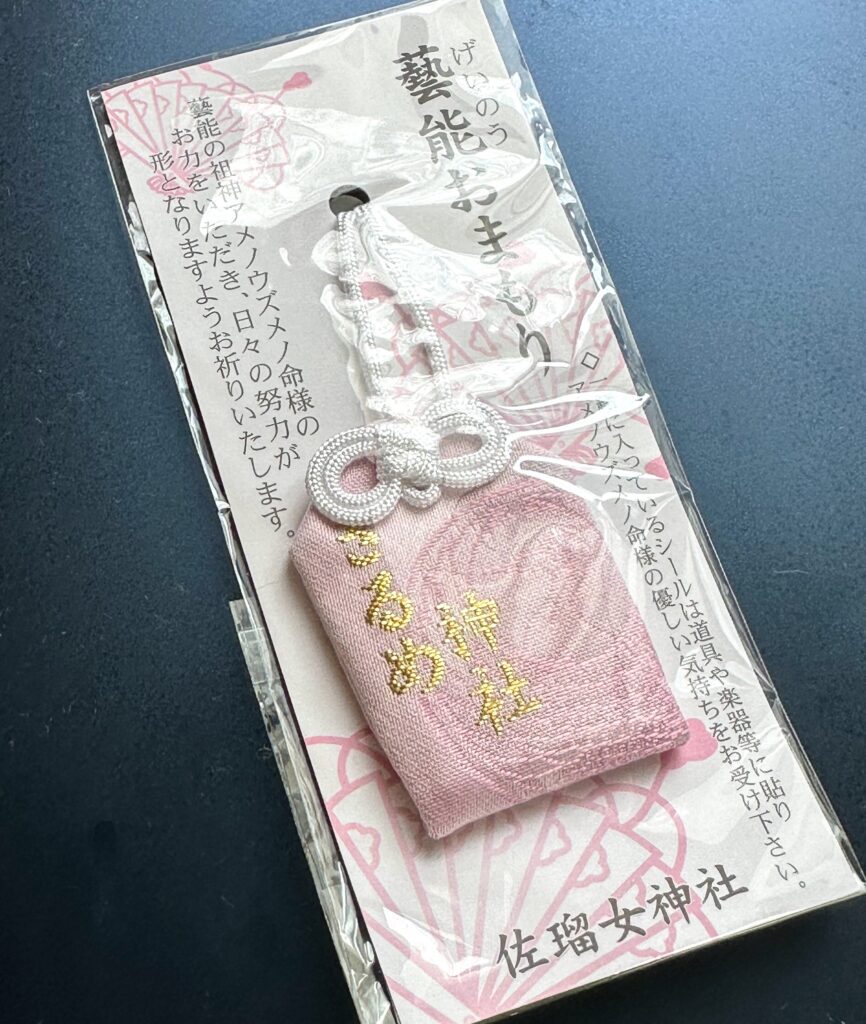
Fulfillment of music, performing arts, and art-related matters.
It is an amulet for improving one’s studies.
There are two colors available, pink and blue, so you can have your favorite color. It is a very useful charm.
It also comes with a sticker that says “UMAKU-NARU” (become good at what you do).
Music people put it on their musical instrument cases.
Those who want to take an art college entrance exam can put it on a pencil case or a cardboard box!
If you put it in a place where you can see it when the time comes, it will give you strength.
It seems that this amulet can be sent by mail, so those who are too far away to visit Ise can rest easy.
Reference HP:Sarume Shrine
Seimei Shrine
【AMULET】
Tanabata Amulet
七夕と言えば去年清明神社で買ったお守りが可愛いくて付ける場所がない pic.twitter.com/6ltl1bM14p
— まこちー🌞 (@makochi_1027) July 7, 2016
Speaking of Tanabata, the amulet I bought at Seimei Shrine last year is so cute that I hesitate to put it on things and get it dirty.
@makochi_1027
This amulet is awarded only from June 1 to August 15.
This is the season of Tanabata Festival in Japan.
The bag has the words “Shogan Jyoju” (fulfillment of wishes), but according to the official website, it also has the blessing of “improving various arts.
Reference: Seimei Shrine
Tenkawa Daibenzaiten Shrine
【AMULET】
Entertainment Amulet
芸能の神⛩天河大辨財天社(天河神社)に晴天の先日、行って来ました。雪の為に初詣が行けずに気になっていました。おみくじと芸能御守りは紫色の一体を受けて来ました。#天河神社 #芸能の神 pic.twitter.com/ARDTaGEdyv
— 原健 (Hara Ken) (@ken0309) March 12, 2021
The god of entertainment. I went to Tenkawa Daibenzaiten Shrine (Tenkawa Shrine) the other day on a clear day. I was anxious to visit the shrine because I could not go for the first time because of the snow. I got a purple one for omikujiji and entertainment amulet.
@ken0309
Good luck charms for various arts
車折神社さんなにかとご縁いただいて何度もお詣りしてるんだけど初めてお守りを授かった"芸術才智守護"、嬉しい。右は天河弁財天さんの諸芸上達守、2年も経ってしまった、大事にしてるけどお礼参りしないと…。上達したがりか…何の技が伸びるのか知らんけども誰かの役に立てると良いね。 pic.twitter.com/A7CfOQMUUl
— むしゃ🦌 (@muushaa93) December 2, 2019
I have visited Kurumazaki Shrine many times, but this is the first time I have received an amulet.
@muushaa93
It is a protection for artistic talent and wisdom. I am very happy. The one on the right is the Tenkawa Benzaiten’s “Shogei Shojo Shojo Mamoru” (protection for improving various arts and crafts). It has been two years since I received it. I cherish it, but I have to pay my respects….
I don’t know what skills I can improve, but I hope I can be useful to someone.
Reference: Tenkawa Great Benzaiten Shrine
Kyoto Gion Yasaka Shrine
Yasaka Shrine is the headquarters of a Shinto shrine whose main deity is Susano-no-mikoto!
Numerous deities are enshrined in its vast grounds.
Among them is Itsukushima Shrine, which enshrines Princess Ichikishimahime no Mikoto, the god of the arts.
Amenouzume, another Japanese god of the arts, is also enshrined at the Ota Shrine.
【AMULET】
Good luck charm for various arts
家の鍵を無くした事よりも、頂いた八坂神社の御守りが無くなったのがショック!!( ̄□ ̄;)!!
— lion heart (@sena_zero) April 30, 2012
「諸芸上達御守り」と書いてあり紫色の綺麗な御守りでした。
新宿にも花園神社があるのですが…やはり京都の八坂神社の御守りが良いのです
( ノД`) pic.twitter.com/wW1Tt0RR
I was more shocked that I lost the amulet of Yasaka Shrine than I was that I lost my house key!
@sena_zero
It was a beautiful purple amulet with the words, “Improvement in various arts and crafts” written on it.
There is a Hanazono Shrine in Shinjuku, but I still prefer the Yasaka Shrine amulet in Kyoto!
( Д`)
そして八坂神社さんでは自分には厄除けと諸芸上達、親には身体健康病気平癒の御守りを授かってきました(^^) pic.twitter.com/5skhCelLbe
— 火雲(かうん)醍冴@kaun (@kaundaigo) November 3, 2014
I got a good luck charm at Yasaka shrine for myself and for my parents.
@kaundaigo
It seems that the above amulets are no longer available.
Instead, two types of amulets with different designs are awarded.
One is red and the other is blue. The elegant design makes it easy to carry around.
Reference: Yasaka Shrine
Osaka Tenmangu Shrine
This shrine in Osaka is dedicated to Sugawara no Michizane.
Even at Tenmangu Shrine, it is rare to find an amulet that focuses mainly on improving various arts and crafts.
Would you like to improve our understanding of pictures and techniques in honor of the wise Michizane?
諸芸上達祈願に大阪天満宮#CAROLの旅 pic.twitter.com/fRGsRnyzwa
— CAROL (@2_mimoza) March 25, 2019
Osaka Tenmangu Shrine for prayers for improvement in various arts.
@2_mimoza
Sugawara Michizane is the god of learning.
However, this is an amulet that shows his aspect as a god of culture.
It does not seem to be awarded by mail.
If you wish to receive it, you must visit the shrine to receive it.
Reference: Osaka Temmangu Shrine
Yotsumiya Shrine, Hyogo
【AMULET】
四宮神社⛩さんの御朱印です pic.twitter.com/mpUqA6C7WJ
— nabedon🐶♪#、 (@nabedon_306) August 14, 2021
This is a red seal of Shikomiya Shrine⛩.
@nabedon_306
Good luck charm for various arts and crafts
初詣に行ってまいりました。
— 八雲[亀石アキヲ] (@kamunagala1) January 1, 2013
神戸元町に諸芸上達の神社、「四宮神社」に参りました。弁財天の霊験あらたかの神社です。
劇団の雪と樋渡といって来ました。 pic.twitter.com/iBjpckr
I went to the shrine for New Year’s visit.
I went to “Shikumiya Shrine” in Motomachi, Kobe, which is a shrine for improving various arts. It is a shrine of Benzaiten, a goddess of the arts.
I went there with my friends, Yuki and Hiwatari of the theater company.
@kamunagala1
Kanto – Shrines dedicated to the God of Arts and Fine Arts
Onoterusaki Shrine, Tokyo
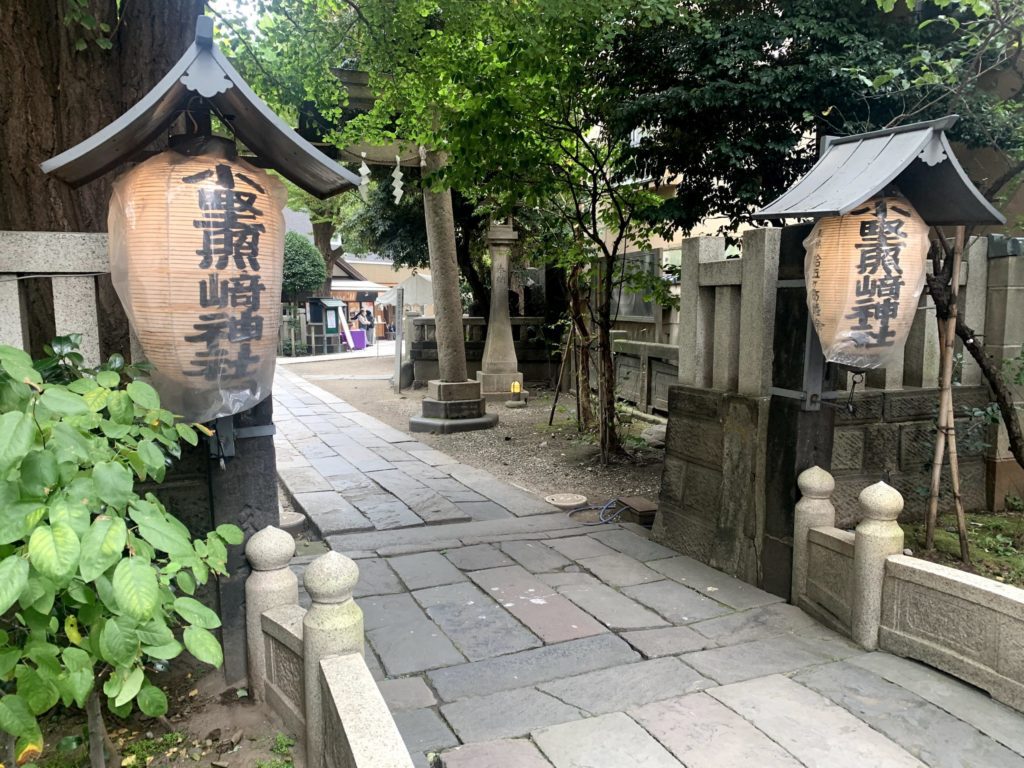
The deity is Lord Ono Takamura, whom we introduced earlier.
The shrine also enshrines various other deities that remind us of mountain worship, such as Mt. Fuji.
This shrine is popular because Kiyoshi Atsumi, famous for his role as Tora-san in “Otoko wa Tsuraiyo,” made a wish at the shrine.
The shrine is blessed for art and entertainment.
Atsumi hoped that acting jobs would come his way instead of making an effort to quit smoking, which he loved!
(In Japan, there is a custom of asking the gods to grant wishes in exchange for making some effort.
For example, in exchange for the effort of visiting a shrine for 100 days, a wish for love is granted.)
A few days later, he was offered the role of Tora-san in the movie “Otoko wa Tsuraiyo.
Because of this story, the shrine is famous for its blessings related to the performing arts, such as theater.
However, Lord Ono Takamura was a man of culture who excelled in calligraphy and painting.
There is no doubt that the shrine is also strong in art-related activities.
Since the shrine is only one stop away from Tokyo University of the Arts, it is said that people related to the arts also visit the shrine.
In addition, the shrine distributes red seals of rare Japanese paintings and is culturally rich.
Recently, it has collaborated with celebrities.
It distributes unique amulets such as
“Amulets to Support Overwhelming Efforts,”
“Amulets to Increase the Power of Action,”
and
“Amulets to Make You More Attractive,”
which are based on social networking.
Overwhelming effort, learning a lot (hyperactivity), and gaining popularity are skills that are necessary in the arts.
It may be a good idea to ask for help from different deities in different fields.
One thing to keep in mind when visiting the shrine is how to get there.
If you take the Yamanote Line, Google Maps will show you the route from Uguisudani Station through the hotel district.
It is also a long walk.
Therefore, unless there is a special reason, use the route from Iriya Subway Station.
【AMULET】
Amulet of performing arts

This is a good luck charm for Ono Takamura, a man of various cultures, to pray for improvement in the arts and performing arts.
It is hard to tell from the picture, but the string is about 80cm long and can be hung from the neck.
It looks just like Tora-san!
It also seems to have Atsumi’s blessing.
The cord is long, so please let children carry it with caution.
Shinobazunoike Benten Hall, Tokyo
【AMULET】
Amulet praying for progress in one’s studies
Akagi Shrine, Tokyo
Architecture Cartoon
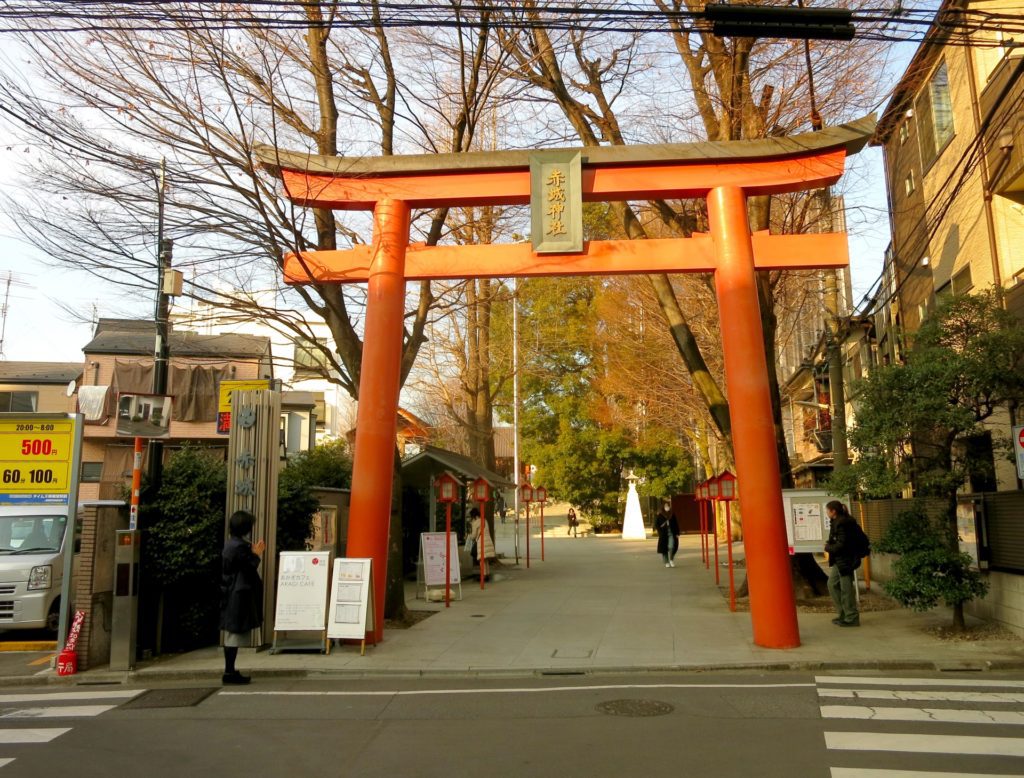
The deities of the shrine are Iwatsuzunomikoto and Akagihimenomikoto, who appear in the Kojiki and Nihonshoki.
Iwatsuzunomikoto, in particular, was born when his father, Izanagi, destroyed the god of fire.
Because of the influence of this story, he is considered the god of fire prevention.
He is also considered the god of learning and the arts.
There is also the Hotaruyuki Shrine dedicated to Sugawara Michizane and the Success Inari Shrine.
It is no exaggeration to say that this is the shrine to visit if you want to get ahead in the arts.
In particular, Michizane Sugawara, like Iwatsuonomikoto, is a god of learning and art.
Therefore, the Hotarubetsu Shrine is lined with hit-prayer ema (votive picture frames) from people involved in anime, manga, and film.
In 2010, the shrine was extensively renovated under the supervision of architect Kengo Kuma.
The design is modern and sophisticated.
The place itself has the presence of an art mecca.
In addition, the shrine has a connection with Shigeru Mizuki, a cartoonist who visited the shrine to pray for the hit anime Kitaro.
Visitors can receive an amulet in collaboration with Kitaro, which makes a great souvenir.
The shrine has been associated with various great people (gods), including Iwatsuonomikoto, Kengo Kuma, Shigeru Mizuki, and others.
The shrine is likely to benefit from a wide range of art, architecture and manga.
【Amulet】
Amulet with Chanchanko design, Amulet with Eyeball Father design
神楽坂の赤城神社で初詣。長蛇の参拝者に怯みそうになったけれど、本殿横の神社カフェでゆっくりできた。冬の甘酒はことさらおいしい。水木しげるデザインのちゃんちゃんこと目玉おやじ御守がモダンかつビビットで一目惚れしました(目玉がモッズのロゴに見えてくる)今年は鬼太郎親子に守ってもらお。 pic.twitter.com/Crul6dGX4c
— pascal (@pascal_hpa) January 2, 2019
Hatsumode at Akagi Shrine in Kagurazaka.
@pascal_hpa
I was almost intimidated by the long line of visitors, but I was able to relax at the shrine café next to the main shrine building. Amazake is especially delicious in winter. The protective talisman with a Shigeru Mizuki design of a chanchanko and an old man with an eyeball was both modern and vivid. I fell in love at first sight. The eyeballs look like a mod logo. This year, let’s have Kitaro and his father, Oyaji the Eyeball, protect us.
These amulets are based on the motif of Kitaro, in collaboration with the cartoonist Shigeru Mizuki.
The chanchanko design amulet is to ward off bad luck, while the eyeball design amulet is to improve one’s outlook.
How about wishing for a blessing to prevent trouble during production, to prevent planning errors, or for inspiration?
Tokyo Onden Shrine
Beauty/Fashion
In the Edo period (1603-1867), the shrine was dedicated to the Buddhist demon king “Sixth Heaven,” who was considered the true form of the current principal deity.
Later, after the Meiji period, when Shintoism and Buddhism were separated, the shrine worshipped the sixth male deity born in Japanese mythology.
In Japan, there is a custom of worshipping a terrifying entity such as a demon to satisfy them and wish them not to do bad things.
The two deities are Omodaru-no-kami and Ayakashikone-no-kami, the goddess.
Both Omodaru-no-kami and Ayakashikone-no-kami are deities of the beauty of the male and female body, and the perfection of the human body.
Today, they are regarded as deities of beauty and craftsmanship, marital bliss, and the creation of all things.
Inferring from their names, they are considered gods of life and childbirth.
They also represent the praise of the human body.
They are one of the gods that have been believed in by the Japanese people since ancient times.
Then, “to create something” must be the original blessing.
It can be said that we can receive the power to overcome the suffering of production and create a masterpiece.
Since it is located near Harajuku, there are many beauty schools in the vicinity.
The shrine is popular among hairdressers.
【AMULET】
An ema (votive tablet) praying for the improvement of one’s skills and beauty
穏田神社の絵馬。
— 東京お散歩教室(主宰 小島信康) (@tokyoosanpo) November 15, 2017
「美容守護」なんてご神徳があるんですね。
初めて知りました。 pic.twitter.com/0egHML4O3h
An ema (votive tablet) of the Yasuda Shrine.
@tokyoosanpo
I had never heard of “beauty protection” before.
There were no amulets for skill improvement, but ema (votive picture tablet) could be purchased!
【2023/11/23】
Amulets for skill improvement were distributed!
🎖技芸上達守の頒布のお知らせ🎖
— 穏田神社 (@onden_jinja) December 15, 2021
12/18(土)11時より「技芸上達守」を頒布いたします。
アニメ『ラブライブ!スーパースター!!』とのコラボお守りでもあるこちらのお守りは、身につける方の技がますます磨かれ、夢が叶うよう祈念しております😌#穏田神社 #ラブライブ pic.twitter.com/9cKLVyDFtU
Announcement of distribution of amulets for skill improvement 🎖.
onden_jinja
We will be distributing “Amulet of Skill Proficiency” from 11:00 a.m. on Saturday, December 18, 2012.
This amulet is a collaboration with Anime “Love Live! Super Star!
This amulet prays that the wearer’s skills will be further refined and his/her dreams will come true.
With the help of the names of the two gods, create many masterpieces!
Reference HP: Onden Shrine
Shimoshinmei Tenso Shrine
Shimoshinmei Tenso Shrine is located in Shinagawa Ward, Tokyo.
【AMULET】
We are pleased to introduce our original amulet for the improvement of one’s art.
The motif is the “Zomen” used in last month’s Shinmei Gagaku performance “Shinso Riko”.
(※Zomen is a mask used in Shinto rituals.)It is available at the reception desk of the shrine office from 9:00 to 17:00.
@tensojinja
The Amulet of Artistic Progress is based on the motif of Zomen, masks used in gagaku dance.
There are four types in total, with a choice of expression and string color.
Ashikaga Orihime Shrine, Tochigi Prefecture
Dyeing and weaving crafts
足利織姫神社に行ったら素敵なお守りお迎えしたのでレビュー。#足利織姫神社 pic.twitter.com/Q7KDM7gc4C
— 瑠衣 (@lapis_1015) August 1, 2021
I went to Ashikaga Orihime Shrine and welcomed a wonderful good-luck charm, so I reviewed it.
@lapis_1015
The two pillars who jointly wove Amaterasu’s robe.
Amenomihokonomikoto and Amenoyachichihimenomikoto are the deities of the shrine.
The shrine is dedicated to blessings related to textiles.
This is because Ashikaga has long been a prosperous area for the weaving industry.
In modern times, the shrine enshrines male and female deities.
It is also considered a shrine of marriage because of the image of weaving together the threads of textiles.
【AMULET】
The details are unknown because it was not listed on the official website.
However, you can receive seven blessings when you go under the seven-colored torii gate.
Seven kinds of amulets based on these motifs are said to be available.
Tokyo Kohoku Hikawa Shrine
江北氷川神社 pic.twitter.com/Ee9M9bvkzO
— 眼 (@bh5cH1iVtUoRDFe) March 12, 2023
Kohoku Hikawa Shrine
@bh5cH1iVtUoRDFe
The waka red seal written by the chief priest is popular at this shrine.
The main deity is Susanoo-no-Mikoto. However, the shrine also enshrines gods related to the creation of the country, such as Izanami no Mikoto and Omodarunomikoto.
Therefore, it is likely to bring blessings for making things and creating new things.
【AMULET】
Benten Biwa AMULET
This charm is in the shape of a biwa (lute) of the goddess Benzaiten.
It is a good luck charm for improving various arts, money, and wisdom.
Music Charm
音楽を愛する全ての人へ!!
— おまいり日和 -お守り・御朱印部- (@Omairi_Biyori) September 30, 2022
おすすめしたいお守りです!!
御朱印もステキです✨#江北氷川神社 #神社 #音楽#御朱印 #神社巡り #芸術の秋 pic.twitter.com/YZeXcV2Hvd
For all music lovers!
@Omairi_Biyori
I recommend this amulet!
The red seal is also lovely ✨
This is not an art amulet, but it is related to art.
This music amulet is a limited edition amulet original to Ekita Hikawa Shrine.
There are few music-only amulets in Japan, so please visit the shrine if you are in the music business.
Reference: Ekita Hikawa Shrine
Kyushu – Shrines dedicated to the God of Arts and Fine Arts
Kokura Yasaka Shrine, Fukuoka Prefecture

This is a large shrine located in the center of Kitakyushu City.
It is located right next to Kokura Castle, and its main deity is Susanoo-no-mikoto.
As many as 16 deities are enshrined here.
So, it can be said that this shrine covers a very wide range of requests.
We could not find any talismans for the improvement of various arts here.
However, it is said that ema (votive picture tablet) praying for the improvement of various arts are awarded.
If you are interested, you should visit there.
The Kitakyushu Municipal Museum of Art has a branch in the River Walk commercial facility next door.
It is bustling with various exhibitions.
Saga Prefecture Touzan Shrine
Pottery
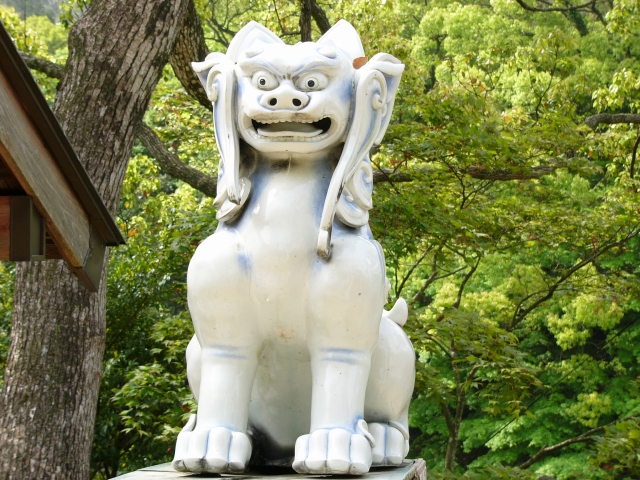
Arita City in Saga Prefecture is one of Japan’s leading pottery production centers.
The Touzan Shrine here has an unusual guardian dog.
They are made of porcelain!
Not only the komainu, but also the water bottle, torii gate, amulet, and even the red seal book are made of porcelain.
The main deity is Hinabewake-no-mikoto, or Hachiman-sama.
The shrine also enshrines Ri Sanpei, who was the first to discover the clay used to make Arita porcelain.
From there, it is said that in Arita, the shrine is familiar as the shrine of the god of pottery.
The contents of the prayers show this.
Among the usual prayers for good luck, family safety, etc., there is a prayer for the safety of the pottery kiln.
It is evident that the shrine is deeply worshipped as the god of pottery in the town of pottery.
陶山神社 pic.twitter.com/JAhBHeHHhy
— Jun1 エコエコアザラシ (@ecoecoazarasi11) November 16, 2023
Touzan Shrine
@ecoecoazarasi11
【AMULET】
As described on the official website of Touzan Shrine, there is a beautiful blue porcelain amulet on a white background.
It is amazing that not only one type is made as a highlight, but all of them are made of pottery.
Furthermore, this amulet was made in a kiln on the shrine grounds.
It is a thoroughgoing faith in the god of pottery.
Matsune Shrine, Saga Shrine, Saga
佐賀県佐賀市・佐嘉神社です。鍋島藩主直正公、直大公を祀ります。入口のカノン砲と奥のアームストロング砲が異彩を放ちます。隣接する場所には松原神社もあり美しい社殿を見ることが出来ます。#佐嘉神社 #御朱印 pic.twitter.com/fKzTGog4X6
— 御朱印太郎 (@gosyuintaro) April 24, 2023
Saga Shrine, Saga City, Saga Prefecture, Japan. It enshrines the feudal lords Naomasa and Naohiro of the Nabeshima domain. The canon at the entrance and the Armstrong gun at the back of the shrine are unique. The Matsubara Shrine is also located next to the shrine and offers a beautiful view of the shrine.
@gosyuintaro
This vast shrine is located in the center of Saga City, Saga Prefecture.
It is so large that seven shrines are enshrined within it.
You can visit 8 shrines in the precincts of this shrine alone.
Each of the eight shrines has its own stamp, so visitors can enjoy visiting shrines as if they were participating in a stamp rally.
Saka Shrine is dedicated to Naomasa Nabeshima, the 10th lord of Saga Nabeshima Domain.
The shrine also enshrines the great men who contributed to Saga.
The shrine is also a place of worship for kappa, Ebisu-san, and other deities that are deeply rooted in the life of Saga.
They are well-loved by the local community.
The second of these shrines, Matsune Shrine, is the second of the Saga shrines to be associated with art.
This shrine is dedicated to Matsunemoto Furukawa, who served the 10th lord of the Saga Nabeshima Domain, Naomasa Nabeshima.
He excelled in calligraphy, waka poetry, and gagaku (ancient Japanese court music) from an early age.
He is worshipped as the god of etiquette, art, and learning.
【AMULET】
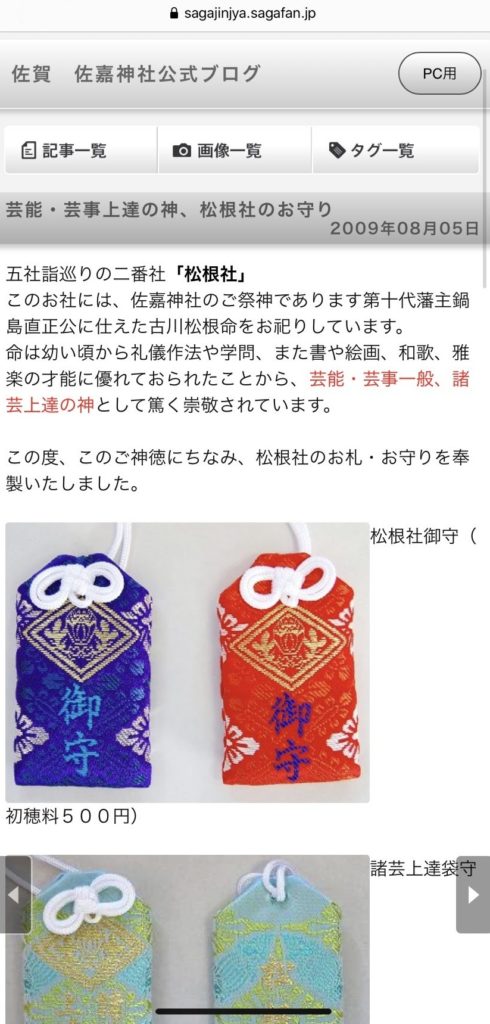
【AMULET】
According to the official blog of Saga Shrine, an amulet for Matsune Shrine and an amulet for improving various arts were made on August 5, 2009.
However, when I visited the shrine in the spring of 2020, they were gone.
Nevertheless, it is certain that the amulet is beneficial for the improvement of various arts and crafts.
This shrine is recommended not only for art, but also for those learning calligraphy and singing.
Kanaya Shrine, Nagasaki
Pottery
波佐見焼のおみくじがある「金屋神社」では、波佐見焼の『おみくじ(100円)』と『お守り(500円)』が買えます⛩
— びわ@長崎ところぐ (@diymp) December 27, 2021
カラフルでとても可愛いです…!👏🏻
(あまりの可愛さに全色集めたくなり、おみくじ7つお守り5つも買ってしまいました🤣) pic.twitter.com/EUNvX6spNR
You can buy Hasami-ware “omikuji (100 yen)” and “omamori (500 yen)” at “Kanaya Shrine” where Hasami-ware omikuji are available.
@diymp
They are colorful and very cute!
It was so cute that I wanted to collect all the colors. So I bought 7 omikuji and 5 omamori.
This is a shrine in Hasami-cho, Nagasaki Prefecture, a place famous for Kyushu’s pottery, which is twinned with Arita.
It is said to have been built in 742, about 1,200 years ago. It is a shrine with a long history.
The deity is Kanayamahiko no Mikoto, a god who protects metals and mines.
The shrine also enshrines his parents, Izanagi, Izanami, and Ameno-oshihomi-no-mikoto.
【AMULET】
【波佐見焼×金屋神社お守りプロジェクト!】
— 波佐見町 (@hasami_town) November 25, 2014
色展開を少し変えて・・・ついに完成しました~\(^o^)/素敵でしょう?巫女さんは氏子さんにお願いして写真撮影も行いました。向かって左から恋愛、健康、商売繁盛、学業、交通安全となっています。 pic.twitter.com/YU4y1zSl8P
Hasamiyaki x Kanaya Shrine Good Luck Charm Project!
@hasami_town
We changed the color scheme a little bit… and finally completed it~\(^o^)/!
Isn’t it nice? The shrine maidens were also photographed by Ujiko-san. From left to right: love, health, prosperous business, schoolwork, and traffic safety.
Here you can buy a very cute Hasami-ware amulet and a omikuji fortune.
This mysterious shape is that of a seasoning container used during the Edo and Meiji periods.
It was made of Hasami-ware and called a compla bottle.
At the time, they were exported outside of Japan.
The blue letters on a white background are quite stylish.
There are six types of colorful amulets.
A charm for traffic safety (wave)
Charm for prosperous business (snow)
Charm for academic success (plum)
Charm for success in love (violet)
Charm for family safety (rape blossoms)
However, they are available only at Hatsumo and in limited quantities.
In addition, it is available only at the site, so you will not be able to receive it unless you have a chance to get it.
The shrine is located in the mountains, so please be careful with traffic.
Chubu – Shrines dedicated to the God of Arts and Fine Arts
Togakushi Shrine, Nagano
Sewing and handicrafts
戸隠神社 奥社⛩️
— MOON STONE (@MOONSTO71692245) November 18, 2023
再参拝させて頂きました😸✨#神社仏閣 pic.twitter.com/iklqxSyhsb
Togakushi Shrine Okusha ⛩️
@MOONSTO71692245
We have re-paid our respects 😸✨
As the name suggests, the shrine mainly enshrines the deities who opened the Ama no Iwato (the Gate of Heavenly Rock).
They are Amenotajikarao-no-mikoto, Amenoyagokoroomo-ikane-no-mikoto, and Amenouzume-no-mikoto.
In Japanese mythology, the gods work together to draw out Amaterasu Omikami (the sun god), who is shut up in a rock.
Omoikane devised a plan, Ame-no-Uzume invoked her, and Amenotajikarao closed the Iwato.
It is Amenouzume who is important in terms of the benefits of art.
However, the shrine hall where Omoikane is enshrined also has an important place.
It is the ceiling painting of the shrine.
The ceiling paintings of the shrine are painted by Kawanabe Gyosai, a genius painter of the Edo period who is still very popular today.
河鍋暁斎といえば、われわれ北辰旅団の第二の故郷である戸隠、「戸隠神社」中社の天井画を描いた絵師だ。原画は焼失したが復元されてそこにある。われわれは雪の2月に芝居を奉納した。 pic.twitter.com/MZGKH2kvJk
— 山村雅治 (@masa_yamr) June 26, 2015
Kawanabe Gyosai is also known for the shrine in Togakushi, the second hometown of our Hokushin Brigade.
@masa_yamr
He was the painter who painted the ceiling of the central shrine of Togakushi Shrine. The original was destroyed by fire, but has been restored and is still there. We dedicated the play in snowy February.
The dragon is majestic, but has a cute, somewhat haughty look.
Also, Amenoharunomikoto, who is worshipped in a shrine called Hogo-sha, has divine virtues in pioneering, academic skills, and sewing.
This shrine is recommended for those who create art works using handicrafts.
【AMULET】
Good luck charm for luck and money
戸隠神社の中社のお守りはイノスレさんにオススメ
— ゆ🐾 (@Lemontune22ik) November 20, 2022
お守りの黄色もあるよ🐉
御朱印帳の黒とホワイトもあるよ🐉
御朱印帳の黒はわたしとオソロだよ🤣 pic.twitter.com/h8T4qLWSv0
I recommend Ino-sula-san to get a good luck charm for the middle shrine of Togakushi Shrine.
@Lemontune22ik
(*Ino-sula is slang for a fan of the Japanese band INORAN.)
There is also a yellow amulet.🐉
There are also black and white red seal booklets.🐉
The black red seal book matches mine 🤣.
This is a good luck charm with Gyosai’s dragon on it.
The benefits are improved luck and money.
However, it is also fun to borrow the energy of a genius painter.
You may be able to paint anything you want.
Good luck charm for improvement in the arts
戸隠神社の火之御子社の芸能上達守護 pic.twitter.com/iptmrTenwj
— 森田ヨーコ / say.ori.to.YOCO (@mani_9ii) October 28, 2018
Hinomikoshi-sha at Togakushi Shrine, a protection for improving the performing arts
@mani_9ii
This amulet offers the blessing of Amanouzume enshrined at Hinomiko-sha Shrine.
Like other performing arts amulets, it is said to provide blessings not only for theater and dance, but also for various other arts.
It seems that this amulet is also famous for being carried by entertainers.
Oguni Shrine, Shizuoka Prefecture
【AMULET】
Good Luck Charm for Progress in Various Arts
今年は星まわりがあまり良くないらしい…と言う事で、小國神社で厄除けのお参りをしてきたよ。
— まさこ (@kuroneko_mako) January 25, 2021
境内は紅梅が見頃を迎えてました。
そして私の大好きな(?)諸芸上達のお守り。なんとも爽やかな、昔あったブルガリのお茶の香水っぽい香りのお守りをお稽古の籠に…今年もお習字が上達しますように♪ pic.twitter.com/kufWmDTh5R
I visited Oguni Shrine to pray for good luck this year, as I heard that astrology is not so good this year.
@kuroneko_mako
Red plum blossoms were in full bloom in the shrine grounds.
And my favorite amulet for improving various arts. I put the amulet, which has a very refreshing scent like the old Bvlgari tea perfume, on my practice basket. May my calligraphy improve this year, too!
Yamada Tenmangu Shrine/Kogane Shrine, Aichi Prefecture
【AMULET】
Good luck charm for various arts
あけましておめでとうございます
— 森崎緩@9/22「株式会社シェフ工房 企画開発室」 (@morisakiyuruka) January 2, 2023
本年もよろしくお願いいたします
久々に初詣へ行きました
画像は山田天満宮でいただいた諸芸上達守です
今年は飛躍の年にしたいです!頑張ります! pic.twitter.com/2C2o4slyWN
Happy New Year!
I look forward to working with you in the New Year.I went to Hatsumode (New Year’s visit to a shrine) for the first time in a while.
@morisakiyuruka
The picture is of a charm for improving one’s art that I received at the Yamada Tenmangu Shrine.
I want this year to be a year of great progress! I will do my best!
Hokkaido – Shrines dedicated to the Gods of Art and Artistry
Shiraoi Hachiman Shrine
This Hachiman Shrine originated in the Edo period.
Although it is a Hachiman Shrine, it was originally a Benzaiten Shrine.
The shrine is dedicated to Princess Ichikishimahime-no-mikoto (Benzaiten), and is deeply related to the performing arts.
【AMULET】
Charm for improving various arts
白老八幡神社⛩️
— グミちゃ (@gumichan02) April 17, 2023
御百度参り用の石?を初めて見た👀
布袋様とか鳥居とか色々大きくて
圧倒されたー
おみくじはノーマルなもの
御朱印は印刷しかなさそうでした! pic.twitter.com/KcjpxXaEFt
First time I saw the stone for the hyakudo 👀.
I was overwhelmed by the huge Torii (shrine gate) and the Hotei (guardian deity).The omikuji is a normal one.
@gumichan02
The only red seal seemed to be printed!
In summary – this is a shrine that enshrines art and art & good luck charms!

In these two articles, I have introduced gods, shrines, and amulets deeply related to arts and fine arts.
I could not cover the whole country equally, as I have rarely been to Tohoku, Chubu, Chugoku, and Shikoku.
However, gods such as Amanouzume, Benzaiten, and Sugawara no Michizane are enshrined throughout the country.
There must surely be a shrine near you that you have a connection with.
There are also shrines dedicated to famous local calligraphers and painters.
It is also fun to unravel the history of japan while searching for a shrine!
Related Article!
➡Gods and Shrines in Japanese Art: A Spiritual Journey
Previous Article!
➡Gods and Shrines in Japanese Art: A Spiritual Journey
Next up!
Click here for an article on analog illustration!
Click here to read the article on Japanese painting!





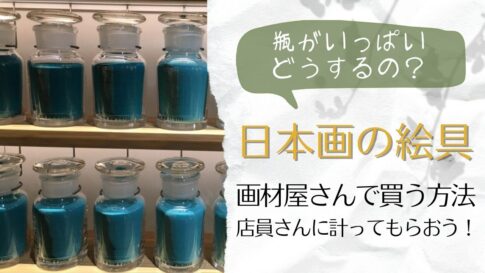
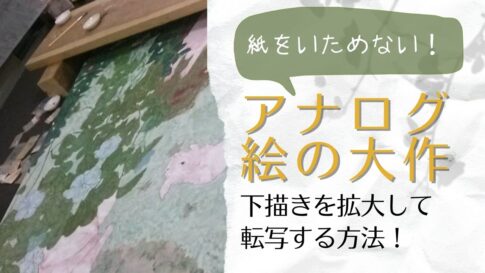
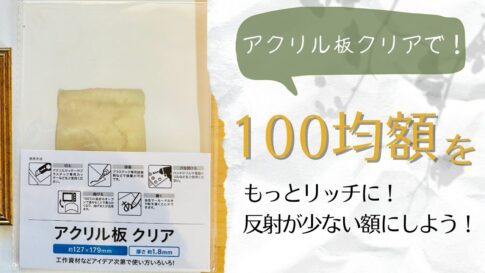
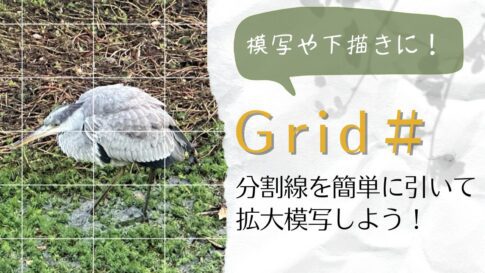
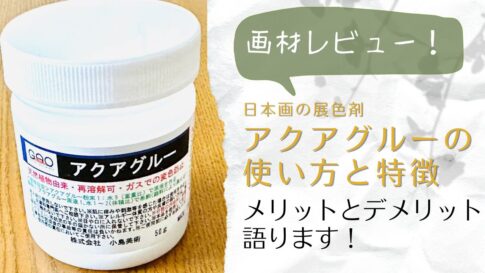
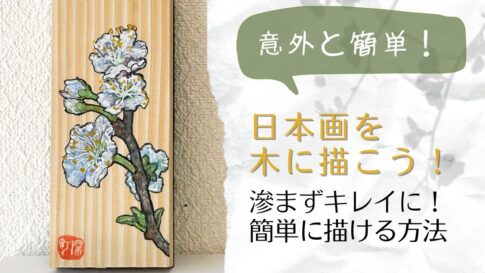















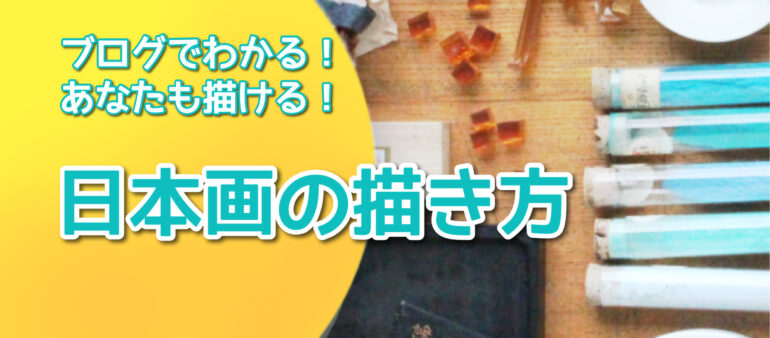
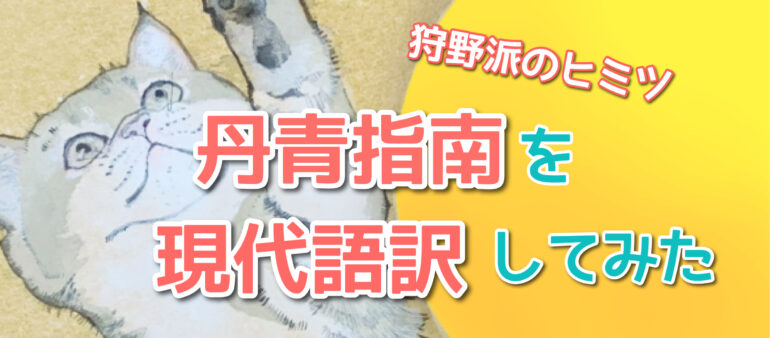
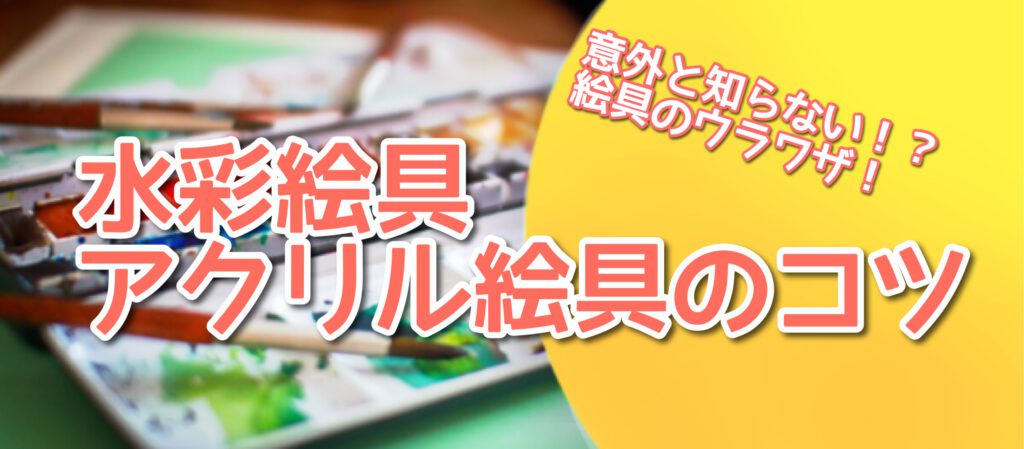
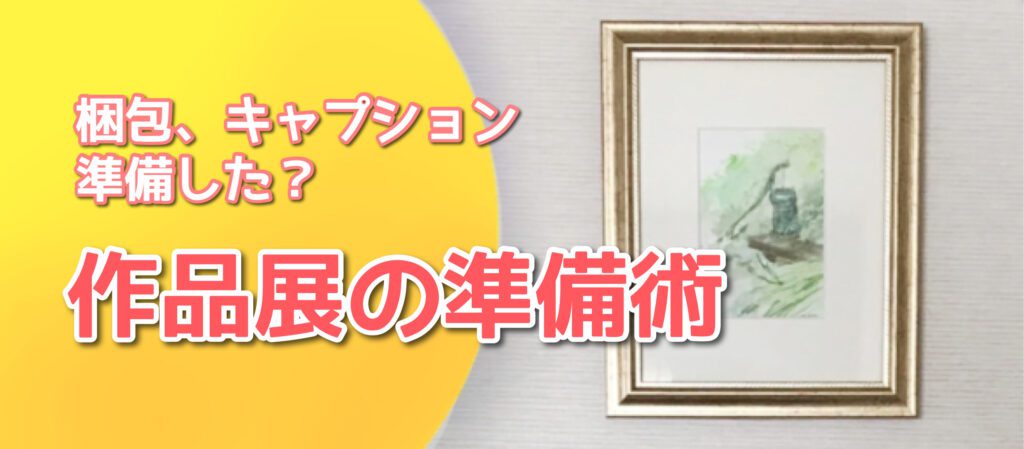
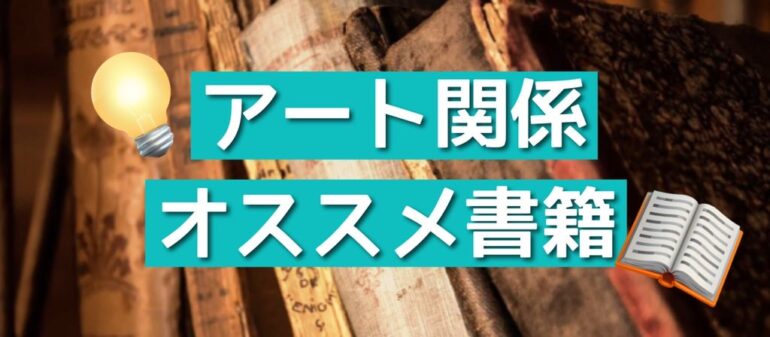
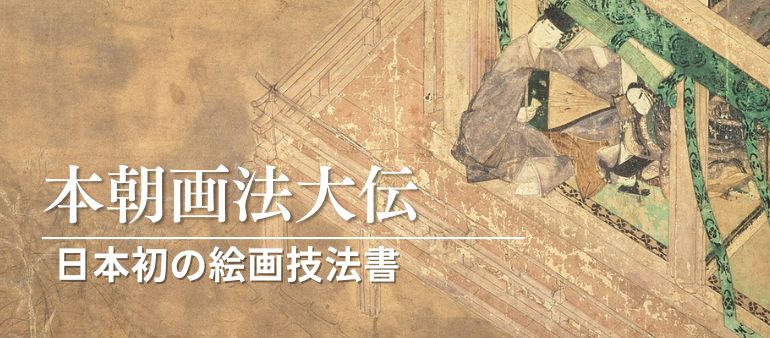

Leave a Reply